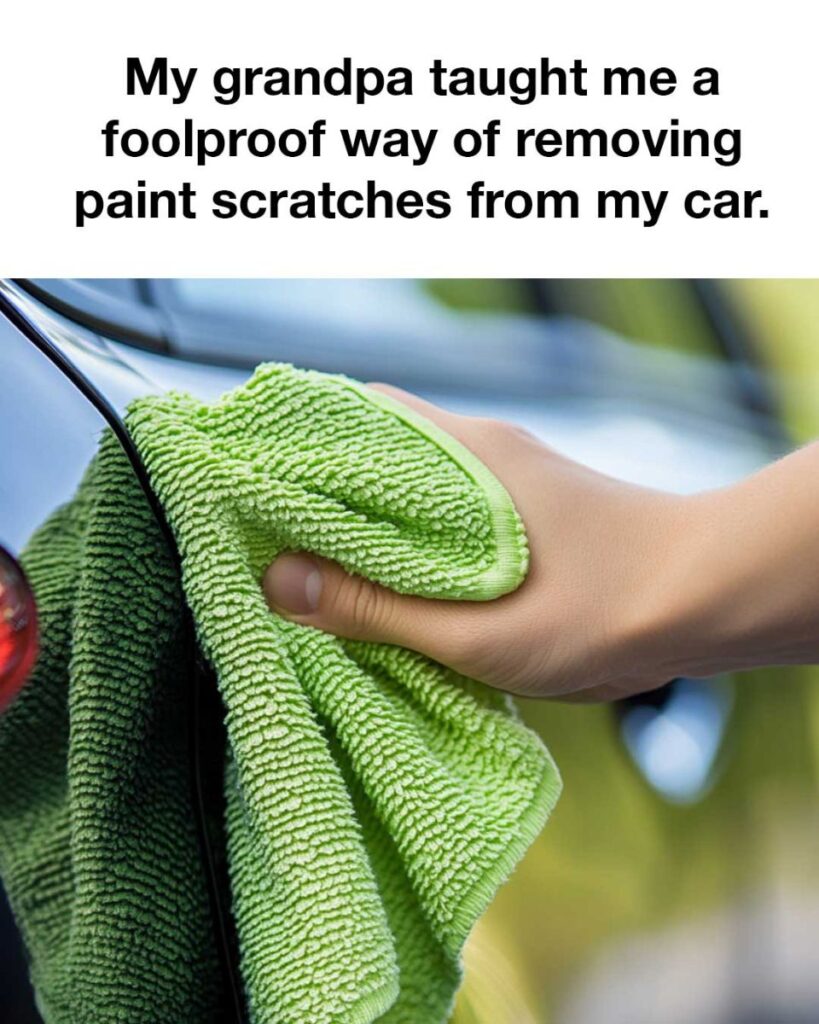Cars are a significant investment, and maintaining their pristine appearance is crucial for many car owners. One of the most common issues that can tarnish the beauty of your vehicle is paint scratches. These pesky marks not only detract from the car’s overall aesthetic but can also lead to more severe damage if left untreated. Luckily, my grandpa passed down a foolproof method for removing these scratches that I’ve personally found incredibly effective. In this article, I’ll share his time-tested technique, so you can keep your car looking its best.
Understanding Paint Scratches
Paint scratches on a car can vary in depth and severity. They range from superficial surface scratches that only affect the clear coat to deep gouges that penetrate the paint layer and reach the metal. Understanding the type of scratch is essential in determining the appropriate method for removal. Surface scratches are usually caused by minor abrasions, while deeper scratches might result from significant impacts or accidents. Correctly identifying the scratch type will help in applying the right treatment and avoiding further damage.
Preparation Before Removing Scratches
Preparation is critical when it comes to effectively removing paint scratches. Before you begin working on the scratch, ensure your car is thoroughly cleaned to remove any dirt or debris that could exacerbate the damage. Park your car in a shaded, cool area to prevent the cleaning agents and compounds from drying too quickly. Assess the scratch to determine its depth and gather all necessary materials. Proper preparation sets the stage for a successful repair and prevents additional harm to your car’s paintwork.
Materials and Tools Needed
Here is a list of materials and tools you’ll need for the scratch removal process:1. Car wash soap and water
2. Microfiber towels or soft cloths
3. Sandpaper (2000-3000 grit) for deeper scratches
4. Scratch removal compound or polishing compound
5. Car wax or polish for finish
6. Small applicator pads or sponges
7. Masking tape to protect unaffected areas
8. Protective gloves and eyewearHaving these items ready will make the process smoother and more efficient.
Step-by-Step Guide to Removing Paint Scratches
Next Page
Step-by-Step Guide to Removing Paint Scratches
Follow these steps to effectively remove scratches from your car’s paint:1. Clean the Area: Wash the scratched area with car wash soap and water, then dry it thoroughly using a microfiber towel.
2. Sand the Scratch (for deep scratches): If the scratch is deep, gently sand the area with 2000-3000 grit sandpaper. Keep the sandpaper wet, and sand in a circular motion until the scratch is less noticeable, being careful not to remove too much paint.
3. Apply Scratch Removal Compound: Using a small applicator pad, apply a moderate amount of scratch removal compound to the scratched area. Work it in with circular motions until the scratch begins to fade.
4. Polish the Area: After the scratch is reduced, use a soft cloth to buff the area, removing any excess compound. This step restores the paint’s shine.
5. Wax the Surface: Finish by applying car wax or polish to the treated area to protect the paint and enhance the overall appearance. Use a clean applicator pad for this step.
6. Buff to Shine: Finally, buff the waxed area with another clean microfiber towel to achieve a smooth, glossy finish.
Safety Precautions
When working on your car, safety is paramount. Always wear protective gloves and eyewear to shield your skin and eyes from harsh chemicals and debris. Ensure you work in a well-ventilated area to avoid inhaling fumes from compounds and waxes. If you use power tools for buffing or sanding, follow the manufacturer’s instructions and exercise caution to prevent accidents or damage to your car.
Common Mistakes to Avoid
Even with a foolproof method, there are common mistakes that can compromise the results. Avoid using harsh or incompatible materials that can worsen the scratch or damage the surrounding paint. Do not over-sand, as removing too much paint can expose the metal underneath. Applying compounds or waxes in direct sunlight can cause them to dry unevenly, leading to streaks or residue. Patience is crucial; rushing the process often leads to subpar results.
Maintenance Tips to Prevent Future Scratches
Prevention is always better than cure. Regularly wash and wax your car to maintain a protective layer over the paint. Avoid parking too close to other vehicles or in areas prone to debris. Use car covers to shield your vehicle from environmental factors like tree branches or bird droppings. Investing in quality car care products and practicing gentle washing techniques will help preserve your car’s finish and minimize the risk of scratches.
Conclusion
Removing paint scratches from your car can feel daunting, but with the right knowledge and tools, it’s a manageable task. Thanks to my grandpa’s tried-and-true method, your car can quickly return to its former glory. By understanding the types of scratches, preparing properly, and following each step carefully, you can effectively restore your car’s paintwork. Remember to take safety precautions, avoid common mistakes, and implement preventive measures to keep your vehicle looking flawless. Happy driving!

